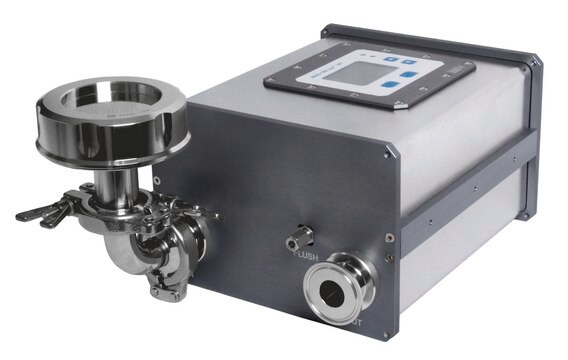SBAT06
BCRP human
membrane preparation for ATPase Assays, recombinant, expressed in baculovirus infected Sf9 cells
Synonim(y):
ABCG2, Breast Cancer Resistance Protein
Zaloguj sięWyświetlanie cen organizacyjnych i kontraktowych
About This Item
Kod UNSPSC:
12352202
Polecane produkty
rekombinowane
expressed in baculovirus infected Sf9 cells
Postać
liquid
stężenie
5 mg/mL
kolor
off-white
numer dostępu UniProt
Warunki transportu
dry ice
temp. przechowywania
−70°C
informacje o genach
human ... ABCG2(9429)
Opis ogólny
Membrane Preparations for ATPase Assays are suitable for drug-efflux transporter interaction studies based on ATPase activity determination, and could be used for differentiation between transporter substrates and inhibitors.
Zastosowanie
The ATPase assay is an in vitro membrane assay designed to indicate the nature of the interaction between the compound and the transporter. By measuring ATPase activity, both activation and inhibition of transporters can be investigated using membranes from baculovirus-infected insect cells or mammalian cell membranes containing high levels of human or rodent wild-type transporters. ABC transporters mediate the transport of substrates against a concentration gradient using energy derived from ATP hydrolysis, which is proportional to the transporter activity and could easily be detected with a colorimetric method.
To assess activation, ABC transporter-rich membranes are incubated with various (typically in 8) concentrations of the test article and the effect on basal ATPase activity is measured. Compounds that stimulate ATPase are generally considered substrates for the transporter. To assess inhibition, a test article′ ability to modify the activity of a given ABC transporter stimulated with its prototypical substrates is examined. The activation and inhibition tests are complementary assays.
Stimulation detected in the activation assay indicate that the compound is a transported substrate of the transporter, while interactions detected in the inhibition test indicate interaction of the test compounds with the transporter, but do not give information on the nature (substrate or inhibitor) of the interaction. In some cases inhibitors or slowly transported compounds may inhibit the baseline transporter ATPase activity as well.
Slowly transported substrates often do not stimulate the ATPase activity in a detectable extent; however the existing interaction can be identified in the inhibition assay.
To assess activation, ABC transporter-rich membranes are incubated with various (typically in 8) concentrations of the test article and the effect on basal ATPase activity is measured. Compounds that stimulate ATPase are generally considered substrates for the transporter. To assess inhibition, a test article′ ability to modify the activity of a given ABC transporter stimulated with its prototypical substrates is examined. The activation and inhibition tests are complementary assays.
Stimulation detected in the activation assay indicate that the compound is a transported substrate of the transporter, while interactions detected in the inhibition test indicate interaction of the test compounds with the transporter, but do not give information on the nature (substrate or inhibitor) of the interaction. In some cases inhibitors or slowly transported compounds may inhibit the baseline transporter ATPase activity as well.
Slowly transported substrates often do not stimulate the ATPase activity in a detectable extent; however the existing interaction can be identified in the inhibition assay.
Postać fizyczna
Supplied as frozen membrane vesicles, containing 5 mg/ml membrane protein, labeled with volume, catalog number (transporter) and date of production.
Informacje prawne
Distributed for SOLVO Biotechnology, Inc.
Ta strona może zawierać tekst przetłumaczony maszynowo.
Kod klasy składowania
12 - Non Combustible Liquids
Klasa zagrożenia wodnego (WGK)
WGK 1
Temperatura zapłonu (°F)
Not applicable
Temperatura zapłonu (°C)
Not applicable
Certyfikaty analizy (CoA)
Poszukaj Certyfikaty analizy (CoA), wpisując numer partii/serii produktów. Numery serii i partii można znaleźć na etykiecie produktu po słowach „seria” lub „partia”.
Masz już ten produkt?
Dokumenty związane z niedawno zakupionymi produktami zostały zamieszczone w Bibliotece dokumentów.
Nasz zespół naukowców ma doświadczenie we wszystkich obszarach badań, w tym w naukach przyrodniczych, materiałoznawstwie, syntezie chemicznej, chromatografii, analityce i wielu innych dziedzinach.
Skontaktuj się z zespołem ds. pomocy technicznej